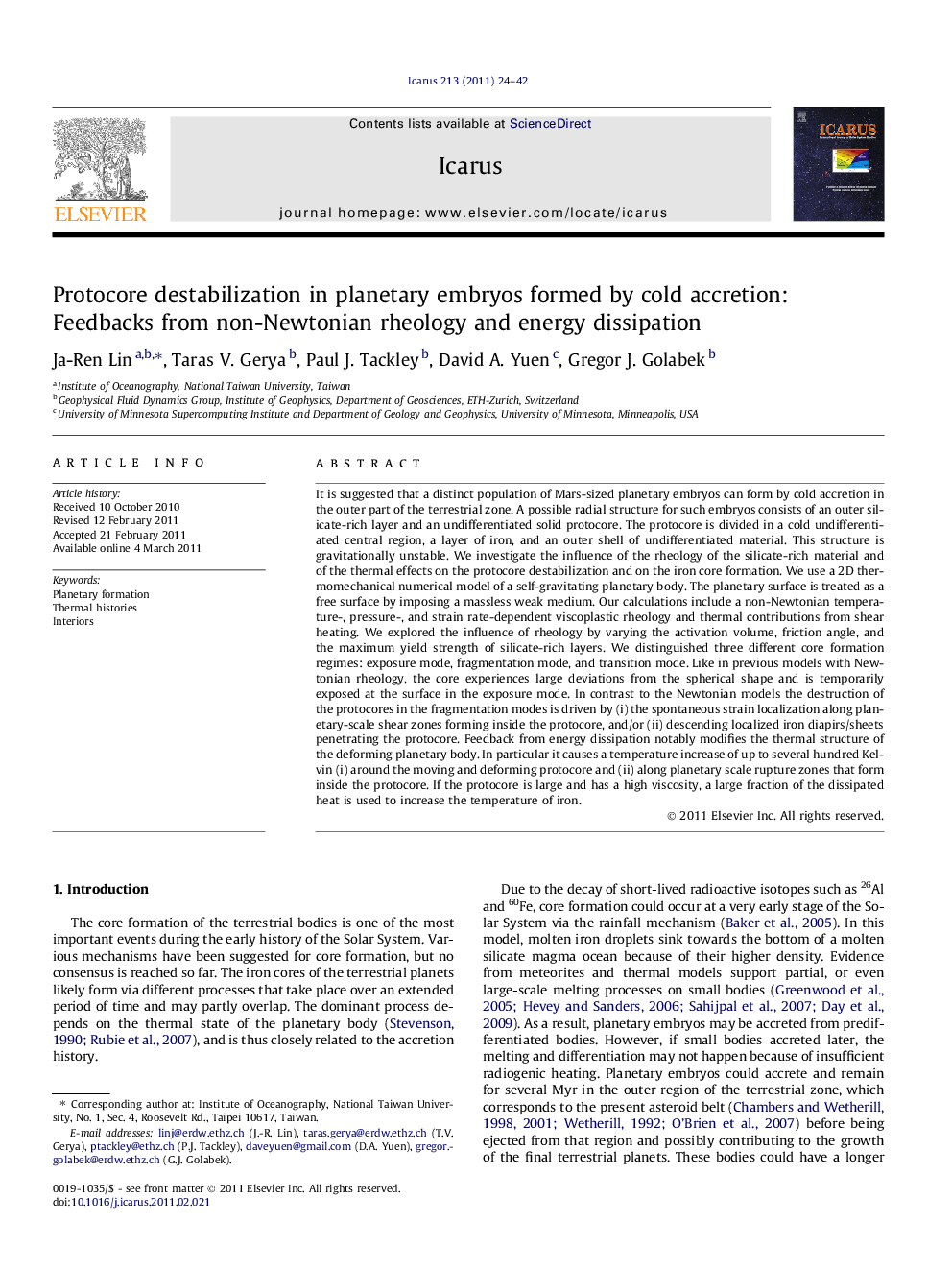| کد مقاله | کد نشریه | سال انتشار | مقاله انگلیسی | نسخه تمام متن |
|---|---|---|---|---|
| 1773867 | 1021150 | 2011 | 19 صفحه PDF | دانلود رایگان |

It is suggested that a distinct population of Mars-sized planetary embryos can form by cold accretion in the outer part of the terrestrial zone. A possible radial structure for such embryos consists of an outer silicate-rich layer and an undifferentiated solid protocore. The protocore is divided in a cold undifferentiated central region, a layer of iron, and an outer shell of undifferentiated material. This structure is gravitationally unstable. We investigate the influence of the rheology of the silicate-rich material and of the thermal effects on the protocore destabilization and on the iron core formation. We use a 2D thermomechanical numerical model of a self-gravitating planetary body. The planetary surface is treated as a free surface by imposing a massless weak medium. Our calculations include a non-Newtonian temperature-, pressure-, and strain rate-dependent viscoplastic rheology and thermal contributions from shear heating. We explored the influence of rheology by varying the activation volume, friction angle, and the maximum yield strength of silicate-rich layers. We distinguished three different core formation regimes: exposure mode, fragmentation mode, and transition mode. Like in previous models with Newtonian rheology, the core experiences large deviations from the spherical shape and is temporarily exposed at the surface in the exposure mode. In contrast to the Newtonian models the destruction of the protocores in the fragmentation modes is driven by (i) the spontaneous strain localization along planetary-scale shear zones forming inside the protocore, and/or (ii) descending localized iron diapirs/sheets penetrating the protocore. Feedback from energy dissipation notably modifies the thermal structure of the deforming planetary body. In particular it causes a temperature increase of up to several hundred Kelvin (i) around the moving and deforming protocore and (ii) along planetary scale rupture zones that form inside the protocore. If the protocore is large and has a high viscosity, a large fraction of the dissipated heat is used to increase the temperature of iron.
► We model core formation in planetary embryos formed by cold accretion.
► The influence of non-Newtonian rheology and thermal feedbacks from shear heating.
► Three core formation modes: exposure, fragmentation, and transition, are observed.
► Localized deformation of the embryos can reduce the timescale of core formation.
► A large and viscous protocore leads to a hotter iron core and a colder mantle.
Journal: Icarus - Volume 213, Issue 1, May 2011, Pages 24–42